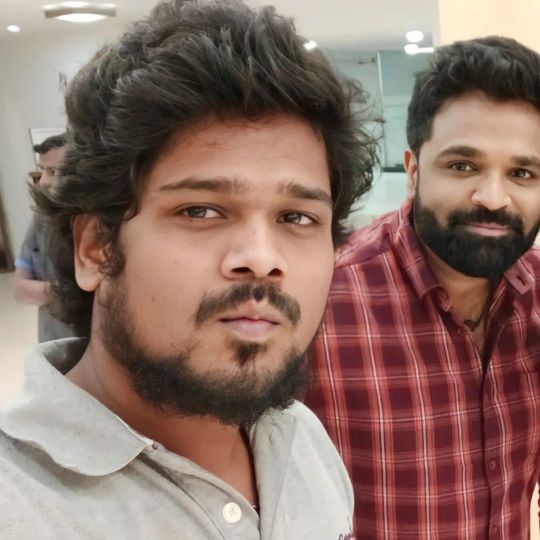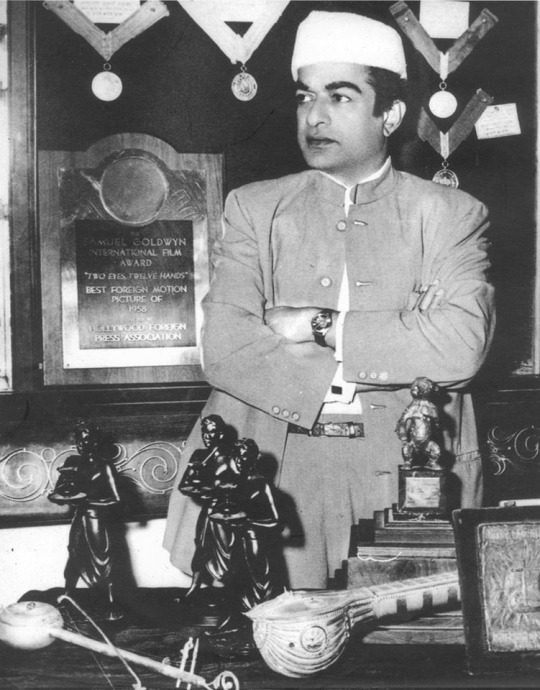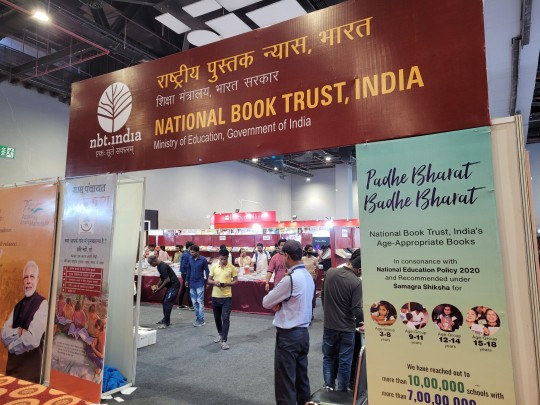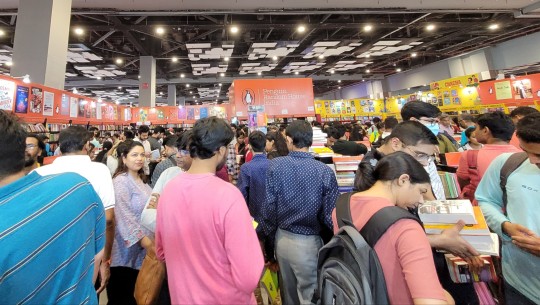#rajkamal
Photo

9ratan set #trendingreels #trending #rajkamal #jewelry #jewellerydesign (Rajkamal nx में) https://www.instagram.com/p/CkYKjNNpibB/?igshid=NGJjMDIxMWI=
1 note
·
View note
Photo

Happy Birthday to a wonderful person Actor ( @rajkamal.actor ) Anna 👬 #loveable #puresoul #kind #humble Humanbeing ❤ . . . . . . . #happybirthday #actor #rajkamal #tamilcinema #rajkamallatharao #couple #movie #sandikuthirai #linga #kasadathapara #tamilserial #serial #abhiyumnaanum #anandharaagam #sillunuorukadhal #instapost #post #on #monday #29thaugust #2022 #instagram #vignesh0307 #vigneshgovindhan #vignesh0307foodlife #vignesh (at Ramada Chennai Egmore) https://www.instagram.com/p/Ch1ys0Hrp4f/?igshid=NGJjMDIxMWI=
#loveable#puresoul#kind#humble#happybirthday#actor#rajkamal#tamilcinema#rajkamallatharao#couple#movie#sandikuthirai#linga#kasadathapara#tamilserial#serial#abhiyumnaanum#anandharaagam#sillunuorukadhal#instapost#post#on#monday#29thaugust#2022#instagram#vignesh0307#vigneshgovindhan#vignesh0307foodlife#vignesh
0 notes
Text
#rekhta books#rajkamal-prakashan books#best urdu books#best histry books.#online urdu books#best urdu novels#fragments of being and other stories#buy urdu books.#godan#madhushala#rashmirathi#urdu books#deewaan-e-ghalib
2 notes
·
View notes
Text
महज 13 दिन पहले Jharkhand के गृह सचिव बनाए गए IAS अरवा राजकमल को चुनाव आयोग ने हटाया
Ranchi: झारखंड में मात्र 13 दिन पहले गृह सचिव बनाए गए अरवा राजकमल को चुनाव आयोग ने हटा दिया है। अरवा राजकमल 2008 बैच के आईएएस हैं।
उन्हें 27 फरवरी को कल्याण विभाग से स्थानांतरित करते हुए झारखंड के मुख्यमंत्री का प्रभारी सचिव बनाया गया था। इ
सके बाद 5 मार्च को उन्हें गृह, आपदा प्रबंधन एवं कारा विभाग के सचिव का भी अतिरिक्त कार्यभार सौंप दिया गया था। राज्य में कई सीनियर आईएएस अफसरों की वरीयता की…

View On WordPress
#Arwa Rajkamal#JharkhandNews#removed by the Election Commission#who was made the Home Secretary in Jharkhand just 13 days ago
0 notes
Text
Snakes and ladders: Traces of Boots on Tongue and Other Stories by Rajkamal Chaudhary
There is a deep darkness in all directions, and we are sitting on the naked floor, awaiting light. When will the light come? Dipu unwraps the sheet from her body and lays it on the ground. She feels along the wall and keeps the bottle and the glass in a corner. Then asks—Who else is here? Chandravati, are you here? Nothing is visible in the dark. Not even one’s limbs. And in this darkness, Dipu’s…

View On WordPress
#book review#books#Hindi#India#literature#Rajkamal Chaudhary#Saudamini Deo#Seagull Books#short stories#Traces of Boots on Tongues#translation
0 notes
Photo

10 posts!
1 note
·
View note
Text

#rekhta books#rajkamal-prakashan books#best urdu books#best histry books.#rekhta Urdu book#urdu Books#Online Urdu Books
0 notes
Photo

Become RAJKAMAL CAMPHOR TABLET 10 GM 100% PURE Distributors Under The Company Name M/S Bhartiya Dhoop Karyalaya Pvt Ltd. For This Business Opportunity Please Call us:+91-11-46710406
#Become RAJKAMAL CAMPHOR TABLET 10 GM 100% PURE Distributors#RAJKAMAL CAMPHOR TABLET 10 GM 100% PURE Distributorship#Top RAJKAMAL CAMPHOR TABLET 10 GM 100% PURE Distributors
0 notes
Photo

Flowers to Ganesha by Rajkamal
40 notes
·
View notes
Text
by amita chaturvedi and syaahi team
On how Maitreyi Pushpa tears up Bundelkhand and pastes it back together in her stories. This article is part of our series on marginal literary cultures in regions often unjustly collapsed with the category of ‘Hindi’.
Surrounded by the valleys of Vindhyachal, Bundelkhand stretches across Uttar Pradesh and Madhya Pradesh. It spans a varied geography and an even more diverse social and cultural milieu. The region has been home to many tribes including the Raut, Bheel, Sahariya, Shabar, Kol, Nishad, Pulind, Kirad, Nag, and others; each with their own distinct languages. Sounds of Danghai, Chaurasi, Pawari, Vidishiya echo in different slices of the expanse. Bundeli is pre-eminent.
Literary tradition in the language dates back almost seven centuries. The epic Alaah-Khand song- style holds a special place in its literary canon despite being in the oral form. Composed by the Bundeli poet Jagnik, the invocation is sung in rural areas on the days of heavy downpour. The prose of Mahabharata and Ramayana written by Vishnudas are also important windows into the canon.
Despite a rich history, Bundeli has not been accorded the same respect as other languages within mainstream literary discourse. But that hasn’t stopped the brilliant writer Maitreyi Pushpa from placing the tongue at the heart of her works. Her 1999 novel Idannamam (This Is Not Mine) published by Rajkamal Prakashan is especially significant in this context. While at some terse points it ties Bundelkhand’s urban and the rural, Idannamam offers a replete depiction of the rural. It is the rural that becomes the primary space for Bundeli to reside in the fiery novel. The language pulsates fluently in the novel, identifying with the daily life and grainy textures of the region it flows within. Pushpa also brews life into her characters by paying attention to the story’s soundscape. Characters converse in Bundeli. Folksongs weave freely in and out of the narrative.
Mandakini, the protagonist of Idannamam, is a woman eager to help the people of her village in resolving their problems. Her own burdens mount heavy. The stories composing her village unfold alongside that of Mandakini’s. Her grandmother Bau always stands by her. Bundeli primarily resurges in the words spoken by Bau and other elderly characters, signifying a generational shift from Bundeli to Hindi, a transformation familiar to many northern areas in India.
The narrative of the novel has been written in Khari Hindi. Modern Hindi literature, which typically utilizes Khari Hindi, can be at times devoid of the grainy sounds common to specific linguistic contexts. Khari Hindi is, at certain points, unable to root itself in local realities. It floats above. It sounds, literally, disconnected to the people in the narrative. Literature attempting to carve out the daily that pulls out tonalities unique to a place can then strike the right chord. How we talk to one another is deeply bound up in how we experience life amongst each other. People, their rituals, their labour, their environment, their beliefs, their relationships. All of these and more inform how they speak about their lives. Bundeli, then, is the passage they walk through to make sense of their world.
Accomplished Hindi writer and publisher Rajendra Yadav, in his introduction to Idannamam, notes
Amidst the refined and bland language of the Hindi fictional literature, Maitreyi has written the story of this village in the natural style of folk literature, as if Manda and the people around her are speaking their own minds- in their own language and dialect, with a Bundelkhandi rhythm… amidst the rumbling of crushers and tractors around them.
The rhythm of their life, Bundeli, resounds between the humdrum of their transforming world.
Having spent most of her early life in Bundelkhand, Pushpa is well versed with not only the language but the social world it finds itself in. The folk songs she strategically makes use of in Idannamam are a testament to this knowledge.
In one moment, a prayer sung in Bundelkhand appears in Idannamam
Vindhya Pradesh zila Tikamgarh,
Nagar Orchha gram,
Ki Janhh Raaje Siri Bhagwan.
(Vindhya Pradesh, district Tikamgarh,
City Orchha town,
Where sits Lord Almighty)
The song drops the reader right where God sits.
In Bundelkhand, verses of valour are far more prevalent than songs of courtship or marriage. Idannamam includes a song of courage which is part of the legion of Suata. In the region, Suata is sung by girls as performances known as Suata Khelna (Playing Suata).
Suata, also known as Naurata, is an important Bundeli festival. It arrives in the Hindi calendar month of Kwaar (typically falling in the Gregorian period of September to October). Young girls collectively worship and play Suata at the dawn for nine continuous days. One of the songs from this tradition is given space in the novel. Though the song does not lend to the narrative’s movement, it offers a fuller life for the story’s characters. A life closer to their own.
Tin ke phool tinahi ke daane,
Chanda uge bade bhunsare.
Sare baare phool siraye,
Kaath kathile kaathe se,
Paanch bhaiya panda se.
Chhoti behen ingur si.
(Whosever are the flowers, the seeds belong to them, The moon rises at early dawn.
All the flowers are floated in water,
With bodies as strong as wood,
All five brothers like Pandavas.
Sixth sister is like vermilion.)
Similarly, “Kartik Nahana” (bathing in the month of Karthik or October to November) is another ritual observed by rural women who visit a local well together to bathe and pray.
Kanhaiya mangta daan dahi kau, Nahaat mein cheer hare sab hi kau, Gopika kyun itrani re.
(Kanhaiya asks for curd, Steals the clothes of Gopikas while they bathe, Why do they get flattered)
Women are prohibited from telling lies to each other during Kartik Nahana. They must reveal private information about their lives such as their sexual relationships with their husbands or other men to successfully complete the ritual. Hiding is a sin. Although the example depicted in the novel could be symbolic of the sexual liberation of women, it could also be interpreted as notions of sin and interior privacy for a woman in Bundelkhand.
Apart from exploring the complex lives of women characters in Bundeli, Pushpa has also provided a very lively description of the visual expanse looming large in Idannamam. Rivers, hills, dams, homes, vegetation, moors. Bundeli becomes the architect of and architecture for the body of Bundelkhand.
“Ja biyaban ko kya kahain! Raat ke samay ye bharka nahin dikhane the. Matti ke jitek unche dunh, utek hi neechi khaai! Ped na ruukh! Katile jhund-hi-jhund!”
(What to say about this desert! These dunes are not visible during the night. The cliffs are as deep as the dunes of soil are high. Neither any trees nor a bush! Only thorny shrubs everywhere!”)
Pushpa also leaves open and bare in plain sight the political and economic webs swallowing the region. Her rural characters are forced to rely on people and institutions in the city for exercising political maneuvers, negotiating legal issues, and, of course, seeking medical treatment. Through this asymmetric exchange, the protagonist Mandakini reckons with the absence of village infrastructure and the gulf that exists between the rural and the urban.
The construction of a hospital in the novel is intrinsically linked to Mandakini’s life. Infrastructure is embodied within her character. In the narrative, Mandakini’s father is responsible for the hospital. The first of its kind in the village. But playing to her authorial strengths of heightened drama, Pushpa engenders a sequence wherein her father is murdered by political strongmen. A stampede ensues. Many die. A life-saving hospital is inaugurated with a blood bath. A child at the time of the tragic event, Mandakini grows up determined to realize her father’s vision. To restore the hospital and mitigate the reliance of the people in her village on largely inaccessible urban infrastructure, all while mending her own inner turmoil.
Language, once again, becomes the fulcrum for this commentary. Bundeli and Khari Hindi constantly collide in the form of conversations between rural and urban characters. These conversations are centered on corruption, electoral battles, economic anguishes, political promises, and other issues the region faces even today.
The crushers and tractors Rajendra Yadav spoke of also point to a larger process within the novel of ecological loss and resultant economic turmoil. Tribal communities and labouring farmers have lost their lands, their homes, their source of livelihood to exclusionary development. The blasts at the crushers. The explosions. They all also pose a threat to the communities’ safety. Workers at crushers too fall to a plethora of health problems like asthma and respiratory issues, tuberculosis, and others.
Idannamam also raises challenges faced by Bundelkhand’s Scheduled Tribes and adivasi groups. With the government acquiring quasi-ownership of the forests, the tribal population has faced displacement and economic crisis. Tribal communities of Bheel, Sahariya and Raut who traditionally survived on hunting and tree-logging are redeployed as cheap labour exploited by public and private sector contractors. Mandakini also struggles to get employment opportunities for the residents of her village.
Hindi and Braj language poet Dr. Dhirendra Verma has written in Hindi Sahitya Kosh,
A writer very cautiously includes the regional landscape, nature, climate, festivals, folk-songs, specific conversational styles, idioms, sayings, specificities of dialects, specific behavioral and natural qualities of people, their romance, moral beliefs etc. to depict regionality in their work.
In Idannamam, this cautiousness translates not to the inclusion of regional particularities but the universal spirit of the novel. Despite containing all the elements of regionality, Maitreyi Pushpa does not regard Idannamam as a regional novel. In an interview to this writer she said,
Idannamam is a novel of Bundelkhand region and therefore it can be regarded as a regional novel. But it is not regional at all. This novel is being taught in the entire country. People everywhere consider it as a sociological novel rather than a regional novel. Today the condition of all villages is the same as that of the villages in Bundelkhand. That’s why I consider it as novel of the entire country because it is related to the entire country. It belongs to the entire nation.
This quality of transcending boundaries, whether linguistic or cultural, jumps out of her novel. It is because she affixes her narrative so strongly within a specific context, that she can reveal universal notions. The rural, especially, is highly local and yet evokes the hierarchies and struggles inherent to rural life across northern India. And this evocation would not be possible without Maitreyi Pushpa prioritising Bundeli.
Screenwriter and playwright, Javed Siddiqui in a discussion on Urdu said that your tongue is that which you dream in. We dream and think through language. Our literature exemplifies this. It is, then, crucial to empower regional languages and tongues like Bundeli and understand their capabilities for pushing creative boundaries of the literary space. Only then will we able to dream bigger and better. Only then will we be able to say that literature is indeed ours.
19 notes
·
View notes
Text

Remembering V. Shantaram, one of India’s most respected and eminent filmmakers, on his birth anniversary (18/11). V. Shantaram began working in the film industry by doing small jobs at the Maharashtra Film Company, which was owned by Baburao Painter in Kolhapur. He first acted in the 1921 silent movie "Surekha Haran." Known affectionately as Annasaheb, Shantaram had a long and successful career in filmmaking, spanning nearly 70 years. He was among the first filmmakers who used movies to bring about social change, promoting kindness and highlighting unfairness and prejudice. He also had a great passion for music and was actively involved in creating music for his films. His songs often needed many rehearsals before he approved them. The famous actor Charlie Chaplin praised his Marathi film "Manoos." In 1927, Shantaram directed his first film, "Netaji Palkar." He co-founded the Prabhat Film Company in 1929, which produced the first Marathi language film, "Ayodhyecha Raja," under his direction in 1932. He left Prabhat in 1942 and started "Rajkamal Kalamandir" in Mumbai, which became a well-known studio. Shantaram introduced his daughter Rajshree and actor Jeetendra in the 1964 movie "Geet Gaya Patharon Ne." He also helped introduce his wife's niece, Ranjana Deshmukh, to the Marathi film industry in 1975 through a film directed by his son. Shantaram received the Dadasaheb Phalke Award in 1985 and was honored with the Padma Vibhushan posthumously in 1992. His autobiography was published in Hindi and Marathi. The Indian government and Maharashtra state government established the V. Shantaram Award to honor filmmakers. The V. Shantaram Motion Picture Scientific Research and Cultural Foundation, set up in 1993, gives out these awards each year on November 18. India Post released a postage stamp in his honor on November 17, 2001.
2 notes
·
View notes
Text
New Delhi World Book Fair
11:45 PM - 5 March 2023 - Pragati Maidan
Had great time with books in New Delhi World Book Fair. It felt like ocean of books.

Thanks to the NGT India and publishers for their efforts to organise such great event.
Sharing some images from the event. There is limitation from mobile app for 10 images only.









किताबो की दुनिया सपनो की दुनिया से कम नही, निकलने का मन ही नही करता।
मैने अपने लिए भी कुछ किताबे लिया हैं उम्मीद हैं इस साल उनके साथ अच्छा वक्त बीतेगा, काफी कुछ पढ़ना हैं इस साल और goodreads की शेल्व को भी खाली करना हैं।
Today was the last day of the Book Fair so I visited again and bought some books again from Penguin, Rajkamal and NBT India.
Yesterday I bought some good books from Harper Collins and I wish to finish them all before end of this year. I have read few Novels from Indian authors so far Munshi Premchand is my favourite and have finished Novels before the estimated time. But non-fiction books will take some extra time, and I just don’t want to read to complete a goal but understand them deeply.
2 hours per day will be enough? Please suggest how you read non-fiction books… Currently I am reading Sapiens, I have completed 70 pages but still feel something is missing. Just want to learn easy way to remember what I have read.
I just don’t want to finish the book in hurry, I want to remember every page. I am I am reading after long time and I think I am not able to grasp the chapters like I used to do. Sometimes I feel audio books on Audible are good easy to carry and start whenever you want but I also feel physical books are interesting, you’re holding something, looking on every words and reading and listening too, so it gives some additional joy.
Reading suggestions are always welcome.
Sujeet...
2 notes
·
View notes
Photo

Happy Birthday to a wonderful person Actor ( @rajkamal.actor ) Anna 👬 #loveable #puresoul #kind #humble Humanbeing ❤ . . . . . . . #happybirthday #actor #rajkamal #tamilcinema #rajkamallatharao #couple #movie #sandikuthirai #linga #kasadathapara #tamilserial #serial #abhiyumnaanum #anandharaagam #sillunuorukadhal #instapost #post #on #monday #29thaugust #2022 #instagram #vignesh0307 #vigneshgovindhan #vignesh0307foodlife #vignesh (at Ramada Chennai Egmore) https://www.instagram.com/p/Ch1tjEeLNkA/?igshid=NGJjMDIxMWI=
#loveable#puresoul#kind#humble#happybirthday#actor#rajkamal#tamilcinema#rajkamallatharao#couple#movie#sandikuthirai#linga#kasadathapara#tamilserial#serial#abhiyumnaanum#anandharaagam#sillunuorukadhal#instapost#post#on#monday#29thaugust#2022#instagram#vignesh0307#vigneshgovindhan#vignesh0307foodlife#vignesh
0 notes
Text
#rekhta urdu book#best urdu books#buy urdu books.#online urdu books#rajkamal-prakashan books#best histry books.#godan#deewaan-e-ghalib#rekhta books#urdu books
1 note
·
View note
Text
Jharkhand: सरायकेला DC, IAS अरवा राजकमल 18 जुलाई को राष्ट्रपति के हाथों होंगे सम्मानित
Saraikela: राष्ट्रपति द्रौपदी मुर्मू आगामी 18 जुलाई को सरायकेला-खरसावां जिले के उपायुक्त अरवा राजकमल को विज्ञान भवन नई दिल्ली में सम्मानित करेंगी। इसके लिए उपायुक्त के पास आमंत्रण भी पहुंच चुका है। यह सम्मान भू अभिलेखों का बेहतर ढंग से डिजिटलाइजेशन और मॉडर्नाइजेशन करने को लेकर दिया जा रहा है।
उपायुक्त अरवा राजकमल को प्रधानमंत्री किसान सम्मान निधि, स्वामित्व योजना, मुख्यमंत्री किसान कल्याण…

View On WordPress
#Deputy Commissioner of Seraikela-Kharsawan district#IAS Arwa Rajkamal#JharkhandNews#President Draupadi Murmu will felicitate Arwa Rajkamal#Saraikela
0 notes
Text
The Power of Urdu Metaphors: An Introduction to "Pakistani Urdu Shayri: Vol. 1"
Urdu poetry, or shayri, has a long and rich tradition in South Asia, with its origins dating back to the 13th century. Today, Urdu poetry continues to captivate readers and listeners alike, both in Pakistan and around the world. In this blog post, we'll take a closer look at the topic of Urdu shayri, with a particular focus on the book "Pakistani Urdu Shayri: Vol. 1" by Narendra Nath, published by Rajkamal Prakashan.
Urdu shayri is a genre of poetry that is characterized by its use of the Urdu language, which is a mixture of Persian, Arabic, and other Indian languages. Urdu shayri often employs complex rhyme schemes and meters, and its subject matter ranges from love and romance to politics and social justice. Some of the most famous Urdu poets include Mirza Ghalib, Faiz Ahmed Faiz, and Allama Iqbal, among many others.
The book "Pakistani Urdu Shayri: Vol. 1" by Narendra Nath is a collection of Urdu poetry by Pakistani poets. The book includes works by a range of poets, including Ahmed Faraz, Parveen Shakir, and Sahir Ludhianvi, among others. The poems in the book cover a variety of themes, including love, nature, and politics, and are sure to appeal to readers of all backgrounds.
One of the standout features of the book is its accessibility. While Urdu poetry can often be difficult for non-Urdu speakers to understand, the translations included in the book make it much more accessible to a wider audience. This means that even those who are not familiar with the Urdu language can still appreciate the beauty and depth of Urdu poetry.
In conclusion, "Pakistani Urdu Shayri: Vol. 1" by Narendra Nath is an excellent introduction to the world of Urdu poetry. Whether you are a seasoned fan of Urdu shayri or a newcomer to the genre, this book is sure to provide hours of enjoyment and enlightenment. So, if you're looking to explore the rich tradition of Urdu poetry, be sure to check out this book and immerse yourself in the world of Pakistani Urdu Shayri.
3 notes
·
View notes